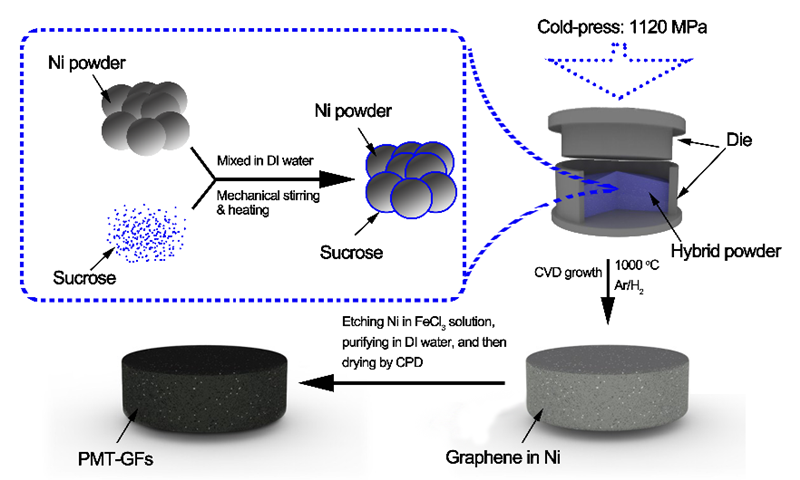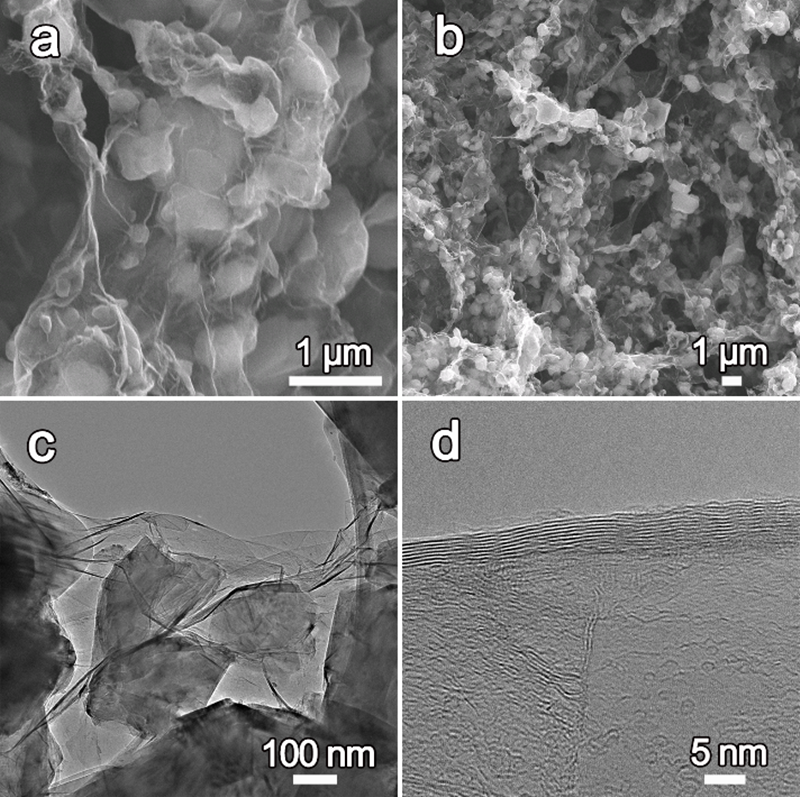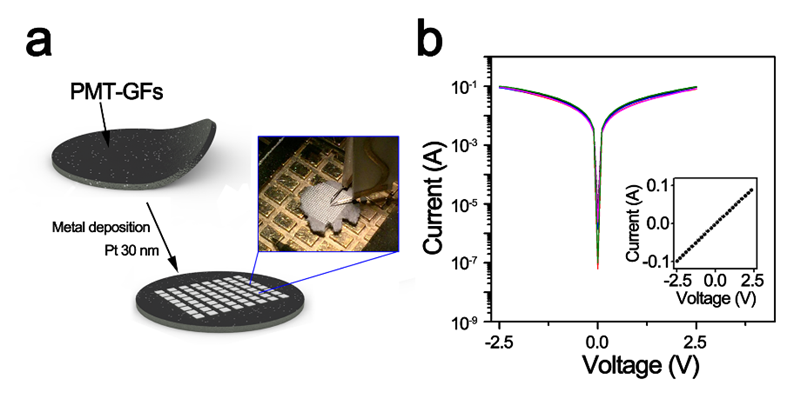Supported by the China Scholarship Council and the State Key Program of National Natural Science of China, TJU Professor Zhao Naiqin’s research group has successfully obtained three dimensional (3D) graphene foam material through the new powder metallurgy template method, in cooperation with Professor J. Tour’s group at Rice University. The material proves to have good performance, excellent self-support ability and structural stability.
Graphene materials can be used in a wide variety of fields such as lithium-ion batteries, supercapacitors and photocatalysis. At the same time, 3D graphene materials with self-support ability, high structural stability and large specific surface area are the current research hotspots. Methods including in-situ synthesis of chemical vapor deposition , solid carbon source and hydrothermal self-assembly have already been proposed. However, structural stability, crystallization degree and production rate still need to be further improved, and the controlling of three-dimensional pore structure is also the key problem to be solved.
In Cooperation with J. Tour’s team, Professor Zhao’s research group used metal powder as a template and sucrose as a carbon source, and made sucrose well-coated on the surface of metal powder particles through mixing. Metal-matrix composites, formed by traditional powder metallurgy method of cold pressing, were obtained by heat treatment with the protection of argon/hydrogen mixed atmosphere. Finally, the in-situ growth of 3D graphene foam was obtained in only one step.

Figure 1. The traditional powder metallurgy (P / M) and chemical vapor deposition (CVD) are combined to obtain the 3D graphene.

Figure 2. (a,b) Scanning electron microscopy and (c,d) transmission electron microscopy images of as-prepared 3Dgraphene foams. Graphene was grown in-situ on the surface / interface of sintered metal particle skeleton, and finally the 3D graphene foam was made up of 2D graphene layers and carbon shell. The 3D graphene foam presented a porous structure, and the carbon shell was connected by 2D graphene layers. Graphene had a multi-layer structure, and the specific surface area was up to 1080 m2 g-1.

Figure 3. Digital photos of 3D graphene foams before and after loading different weights. The product has good structural stability and can keep in good condition under the action of water. It can bear more than 150 times the weight of itself, and achieves rebound after unloading.

Figure 4. (a) Schematic diagram of room-temperature electrical conductivity testing of 3D graphene foam. (b) Current?voltage curve. The two-electrode method was used to test the room-temperature electrical conductivity of the product, and the result was 13.8 S cm-1, which showed a well conductivity.
3D carbon nano-materials with different kinds and shapes can be prepared by changing the metal powder composition, additive composition and mold structure. This method also provided new methods and ideas for the development of new carbon nano-materials and 3D structure reinforced composite materials.
The research achievement was published on ACS Nano (http://pubs.acs.org/doi/ 10.1021/acsnano.5b06857). The National Natural Science Foundation of China also reported this achievement on the website. (http://www.nsfc.gov.cn/publish/portal0/ tab88/info51652.htm).
Translated by Bao Yanyan
Editors: Yin Wei & Doris Harringtion






